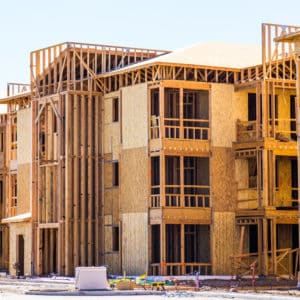Commercial Drywall Estimating Services
Multi-Family

Understanding Commercial Multi-Family Projects: A Detailed Overview
Introduction
Commercial multi-family projects involve the development, construction, and renovation of residential properties designed to house multiple families within a single building or complex. These projects can range from apartment buildings and condominiums to town homes and mixed-use developments that combine residential units with commercial spaces. The process of undertaking a commercial multi-family project is complex, requiring careful planning, coordination, and execution to ensure the finished product meets the needs of residents, complies with regulations, and achieves the desired financial return for developers and investors.
This detailed webpage will explore what a commercial multi-family project entails, the different stages of development, the benefits, challenges, and key considerations for successfully managing such projects.
1). What Is a Commercial Multi-Family Project?
A commercial multi-family project refers to the construction or renovation of residential buildings that are designed to accommodate multiple households. These projects are typically larger in scale than single-family homes and involve a variety of housing units, such as apartments, condos, or townhouses, within a single property or complex. The goal of these projects is to create a comfortable, efficient, and attractive living environment for residents while generating a profitable return for developers.
Types of Commercial Multi-Family Properties:
- Apartment Buildings: Typically feature multiple rental units within a single building or complex. Units can range from studios to multi-bedroom apartments.
- Condominiums: Similar to apartments, but the individual units are owned rather than rented. Common areas are shared among unit owners.
- Town Homes: Multi-level homes that share walls with neighboring units, offering a combination of private living space with some communal features.
- Mixed-Use Developments: Combine residential units with commercial spaces, such as retail stores, offices, or restaurants, within the same building or complex.
2). Key Components of a Multi-Family Project
Site Selection and Acquisition:
- Location Analysis: The success of a multi-family project often hinges on its location. Factors such as proximity to employment centers, public transportation, schools, and amenities are critical in attracting potential residents.
- Zoning and Land Use: Understanding local zoning laws and land-use regulations is essential to determine what type of multi-family development is permissible on a given site.
- Land Acquisition: Once a suitable site is identified, the developer must negotiate the purchase of the land, which may involve securing financing or partnerships.
Project Design and Planning:
- Architectural Design: Architects and designers create detailed plans for the building’s layout, including unit configurations, common areas, amenities, and overall aesthetic. This phase also involves designing the building to maximize natural light, energy efficiency, and resident comfort.
- Engineering and Infrastructure: Structural engineers ensure the building is safe and compliant with local building codes. Additionally, civil engineers design the infrastructure, including water, sewage, electrical systems, and road access.
- Permitting and Approvals: Before construction begins, developers must obtain the necessary permits and approvals from local government agencies. This can include environmental impact assessments, building permits, and compliance with fire safety and accessibility regulations.
Construction and Development:
- Site Preparation: The construction phase begins with site preparation, including clearing the land, grading, and laying the foundation.
- Building Construction: The construction of the building’s framework, walls, roofing, and interiors follows. This phase requires coordination among various trades, including carpenters, electricians, plumbers, and HVAC specialists.
- Interior Finishing: Once the structure is in place, attention turns to finishing the interiors, including installing flooring, cabinetry, lighting, and appliances. Common areas such as lobbies, gyms, and lounges are also completed during this phase.
- Landscaping and Exterior Work: The project is completed with landscaping, parking lot construction, and any necessary roadwork. Outdoor amenities such as pools, playgrounds, and gardens are also installed.
Marketing and Leasing/Sales:
- Marketing Strategy: A comprehensive marketing plan is essential to attract potential tenants or buyers. This can include digital marketing, open houses, and partnerships with real estate agents.
- Leasing/Sales: For apartment buildings, a leasing office is typically established on-site to handle tenant inquiries, tours, and lease agreements. For condominiums and town homes, sales teams work to sell individual units to buyers.
3). The Multi-Family Project Development Process
Step 1: Feasibility Study and Market Analysis
- Market Research: Conducting a thorough market analysis helps determine the demand for multi-family housing in the target area. This includes studying demographic trends, competition, and pricing.
- Financial Feasibility: A financial analysis is conducted to assess the project’s potential return on investment. This includes estimating construction costs, financing options, rental or sales income, and long-term maintenance expenses.
Step 2: Pre-Construction Planning
- Project Team Assembly: A successful multi-family project requires a team of experienced professionals, including architects, engineers, contractors, legal advisors, and property managers.
- Design Development: The design is refined based on the feasibility study and market analysis, ensuring it meets the needs of the target market while staying within budget.
- Permitting and Financing: Securing the necessary permits and arranging financing are critical steps before construction can begin. This may involve working with banks, investors, or government programs.
Step 3: Construction Management
- Project Scheduling: A detailed construction schedule is created, outlining key milestones, deadlines, and coordination among trades.
- Quality Control: Regular inspections are conducted throughout the construction process to ensure that work meets the required standards and complies with building codes.
- Budget Management: Keeping the project within budget is essential. This involves monitoring expenses, managing change orders, and mitigating any potential cost overruns.
Step 4: Completion and Occupancy
- Final Inspections: Before occupancy, the building undergoes final inspections to ensure that all work is completed to code and that the building is safe for residents.
- Tenant Move-In/Unit Sales: Once the building is certified for occupancy, tenants can begin moving in, or unit sales can be finalized. For rental properties, ongoing property management is essential to maintain the building and address tenant needs.
Step 5: Property Management and Maintenance
- Ongoing Management: For rental properties, a property management company typically handles day-to-day operations, including leasing, rent collection, maintenance, and resident services.
- Long-Term Maintenance: Ensuring the long-term durability of the building requires regular maintenance and updates. This includes repairing wear and tear, updating common areas, and ensuring all systems function properly.
4). Benefits of Commercial Multi-Family Projects
Income Generation:
- Steady Cash Flow: Multi-family properties generate consistent rental income, making them an attractive investment for developers and investors.
- Economies of Scale: Operating multiple units within a single property allows for more efficient management and cost savings compared to managing individual single-family homes.
Demand and Stability:
- High Demand: Multi-family housing is often in high demand, particularly in urban areas where housing options may be limited.
- Risk Diversification: With multiple units, the risk is spread across several tenants, reducing the impact of vacancies on overall income.
Investment Appeal:
- Appreciation Potential: Multi-family properties tend to appreciate over time, offering long-term value growth.
- Tax Benefits: Investors in multi-family properties may benefit from tax incentives, including depreciation deductions and favorable financing options.
Community and Lifestyle:
- Amenities and Services: Multi-family developments often include amenities such as gyms, pools, and community centers that enhance the living experience for residents.
- Social Interaction: These properties foster a sense of community, with common areas and shared spaces encouraging social interaction among residents.
5). Challenges and Considerations in Multi-Family Projects
Regulatory and Zoning Challenges:
- Zoning Restrictions: Navigating local zoning laws can be complex, and changes in regulations can impact the feasibility of a project.
- Permitting Delays: Obtaining the necessary permits and approvals can be time-consuming, potentially delaying the project and increasing costs.
Construction Complexity:
- Coordination of Trades: Multi-family projects require precise coordination among various trades and contractors, which can be challenging, especially in large-scale developments.
- Quality Control: Ensuring consistent quality across multiple units and maintaining high construction standards is crucial to avoid costly repairs and dissatisfied residents.
Financial Risks:
- Cost Overruns: Unexpected costs, such as rising material prices or labor shortages, can strain the project budget and reduce profitability.
- Financing Challenges: Securing financing for large-scale multi-family projects can be complex, requiring careful financial planning and risk management.
Market Fluctuations:
- Economic Conditions: Market conditions, such as changes in interest rates, housing demand, and local economic health, can significantly impact the success of a multi-family project.
- Occupancy Rates: Achieving and maintaining high occupancy rates is essential for the financial success of the project, requiring effective marketing and property management strategies.
Property Management:
- Tenant Turnover: High turnover rates can lead to increased vacancy and higher costs related to marketing and preparing units for new tenants.
- Maintenance Costs: Ongoing maintenance and repairs are necessary to keep the property in good condition, which can be costly and time-consuming.
What’s Involved In A Multi-Family Project And What We Look For
Includes Specification Sections 5, 7, & 9
Commercial multi-family buildings play a significant role in meeting the housing needs of urban and suburban populations. They offer a variety of housing options and are managed to provide a comfortable and convenient living environment for their residents.
Putting together a proper bid for a Multi-Family drywall project requires careful planning and consideration of various factors to ensure a successful and profitable project. Here are some key considerations we look at when preparing our bid:
CONSIDERATIONS:
Project Scope and Specifications:
Our first step is making sure we have a thorough understanding of the project’s scope, including wall and ceiling types, finishes, acoustics, fire ratings, resilient channels and any unique features. We look at all U.L. listings and specifications in detail and if there are conflicts between the plans, specifications or U.L. listings, we will always defer to the U.L. listings. Safety will always be our number one concern. We are dealing with families, we know what’s at stake.
Site Visit:
If feasible or necessary, we may ask you to conduct a site visit to assess the current conditions, including any potential challenges such as uneven surfaces, existing damage, or structural issues that may affect the drywall installation.
Material Costs:
We will use your material pricing or supply you with a Request for Material Pricing Sheet for you to send to your supplier(s) for specific cost of materials. It is important at this point to get a locked in pricing end date.
Labor Costs:
Consult with your team to get your company’s labor rates for each specific trade or we will work with them to establish labor rates specific to this job and to account for any overtime or specialized labor if necessary.
Equipment and Tools:
Determine the equipment needed for the project, such as drywall lifts, scaffolding, and power tools, including the cost of renting or purchasing these items if necessary.
Subcontractors:
If you use subcontractors for specific tasks, RC-1, hanging, finishing or texture, we will ask for those rates and factor these costs into your bid.
Overhead and Profit Margin:
Consider your overhead costs, such as insurance, permits, administrative expenses, and profit margin. Ensure your bid covers all these expenses.
Client Communication:
Maintain clear and open communication with you for any needs, changes, or additional requirements during the project.
Common Pitfalls in Estimating Multi-Family Projects
1). Inaccurate Scope of Work
- Issue: One of the most common pitfalls is an inaccurate scope of work. This can result from incomplete or unclear project specifications, leading to miscalculations in material and labor costs.
- Impact: An inaccurate scope can cause budget overruns, project delays, and disputes between stakeholders.
- Prevention: Ensure a comprehensive scope of work by reviewing detailed project plans and specifications. Engage with architects, engineers, and other stakeholders to clarify any ambiguities before finalizing the estimate.
2). Underestimating Labor Costs
- Issue: Labor costs for multi-family projects can be underestimated due to the complexity of coordinating multiple trades and managing a large workforce.
- Impact: Underestimating labor costs can lead to financial shortfalls and delays in project completion.
- Prevention: Obtain accurate labor quotes from subcontractors and consider the complexity of the project when estimating labor costs. Factor in potential overtime and any specialized skills required.
3). Ignoring Market Fluctuations
- Issue: Material prices and labor rates can fluctuate due to market conditions. Ignoring these fluctuations can result in inaccurate estimates.
- Impact: Unexpected price increases can lead to budget overruns and financial strain on the project.
- Prevention: Stay informed about current market conditions and trends. Include a contingency buffer in your estimate to account for potential price changes.
4). Overlooking Project-Specific Requirements
- Issue: Multi-family projects often have unique requirements such as compliance with local building codes, accessibility standards, and environmental regulations. Overlooking these requirements can result in additional costs.
- Impact: Non-compliance can lead to fines, delays, and costly changes to the project.
- Prevention: Review all project-specific requirements and regulations carefully. Consult with local authorities and ensure that your estimate includes costs for compliance.
5). Failure to Account for Hidden Costs
- Issue: Hidden costs such as unforeseen site conditions, utility connections, or legal fees can be overlooked during the estimating process.
- Impact: These costs can disrupt the budget and lead to financial strain.
- Prevention: Conduct thorough site assessments and include allowances for potential hidden costs in your estimate. Regularly review and update your estimate to account for any changes.
6). Inadequate Contingency Planning
- Issue: Failing to include a sufficient contingency fund for unexpected issues can leave the project vulnerable to budget overruns.
- Impact: Unplanned expenses can derail the project and strain financial resources.
- Prevention: Include a contingency allowance in your estimate to cover unexpected issues or changes in scope. The contingency fund should be based on the project’s complexity and potential risks.
7). Poor Communication with Stakeholders
- Issue: Inadequate communication with project stakeholders, including clients, architects, and subcontractors, can lead to misunderstandings and inaccuracies in the estimate.
- Impact: Miscommunications can result in errors in the scope of work, material quantities, and labor requirements.
- Prevention: Maintain clear and open communication with all stakeholders throughout the estimating process. Regularly review and confirm project details to ensure alignment.
8). Neglecting Scheduling Implications
- Issue: Estimating without considering the project timeline and scheduling can result in unrealistic cost predictions.
- Impact: Delays in the project schedule can lead to increased costs and impact overall project profitability.
- Prevention: Develop a detailed project schedule that aligns with your estimate. Factor in potential delays and include time for unforeseen issues.
Conclusion
Accurate estimating is essential for the successful completion of multi-family projects. By understanding and addressing common pitfalls, you can develop more reliable estimates, avoid budget overruns, and ensure that your project stays on track. For expert assistance with estimating multi-family projects,
Our experienced team can help you navigate the complexities of estimating Multi-Family projects and ensure a successful project outcome.


